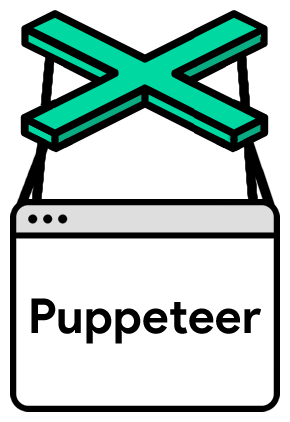Selenium’s long run as the default choice for browser automation doesn’t mean it’s always the perfect fit anymore. Newer tools tackle its pain points – think flaky tests or steep learning curves – with smarter features tailored to today’s web apps. From quicker setups to built-in debugging, these options can save time and headaches for developers and testers alike.

1. AppFirst
AppFirst works to simplify infrastructure provisioning for developers by automating the setup of cloud resources based on simple app definitions. They handle tasks like networking, credentials, and security boundaries without requiring manual configuration in tools such as Terraform or YAML. This approach allows teams to focus on application development while ensuring consistent practices across different cloud providers.
The platform supports deployment options like SaaS or self-hosted setups and includes features for logging, monitoring, and cost tracking. AppFirst aims to support teams that move quickly by reducing the need for dedicated infrastructure expertise and providing centralized control over changes and audits.
Key Highlights:
- Supports provisioning across AWS, Azure, and GCP.
- Includes built-in logging, monitoring, and alerting.
- Offers cost visibility by application and environment.
- Provides options for SaaS or self-hosted deployment.
Services:
- Automated infrastructure provisioning from app specifications.
- Centralized auditing of infrastructure changes.
- Application of security standards during setup.
- Management of networking and credentials.
Contacts:
- Website: www.appfirst.dev

2. Cypress
Cypress provides an open-source framework for automated browser testing that runs directly inside the browser to interact with application code and the DOM. They focus on end-to-end, component, and integration testing for web applications, with built-in support for JavaScript and TypeScript. This setup helps teams write and debug tests without managing external drivers or libraries.
The framework includes tools for real-time reloading and an interactive dashboard to improve the testing process. Cypress aims to support projects in the JavaScript ecosystem by offering a streamlined way to handle browser-based tests, while allowing for automatic waits and direct code access to make workflows more efficient.
Key Highlights:
- Runs tests within the browser for direct interaction.
- Supports JavaScript and TypeScript scripting.
- Includes automatic waiting and real-time reloading.
- Provides an interactive dashboard for debugging.
Services:
- End-to-end testing for web applications.
- Component and integration testing in the browser.
- Handling of assertions without external libraries.
- Debugging tools for test development.
Contacts:
- Website: www.cypress.io
- LinkedIn: www.linkedin.com/company/cypress.io
- Twitter: x.com/Cypress_io
- Facebook: www.facebook.com/cypressio

3. Katalon
Katalon offers an integrated solution for test automation across web, mobile, API, and desktop applications using a single platform. They combine a graphical interface with scripting options in Groovy to support both beginners and experienced testers in creating and managing tests. The platform includes built-in management for test execution and reporting, with connections to CI/CD tools.
Katalon builds on underlying engines like Selenium for web testing and Appium for mobile, but adds layers for easier setup and reuse of test elements. Their goal is to provide a centralized framework that covers the full testing lifecycle, from recording tests to executing them in various environments, while supporting both no-code and low-code approaches.
Key Highlights:
- Supports testing for APIs, web, mobile, and desktop.
- Offers no-code recording and Groovy scripting.
- Includes object repository for test element management.
- Provides detailed reports for test execution.
Services:
- Test creation using record-and-playback or keywords.
- Execution across multiple environments.
- Integration with CI/CD pipelines.
- Centralized management of test assets and security.
Contacts:
- Website: katalon.com
- E-mail: business@katalon.com
- LinkedIn: www.linkedin.com/company/katalon
- Twitter: x.com/KatalonPlatform
- Facebook: www.facebook.com/KatalonPlatform
- Address: 1720 Peachtree Street NW, Suite 870, Atlanta, GA 30309

4. Puppeteer
Puppeteer gives developers a JavaScript library to control Chrome or Firefox through the DevTools Protocol. They run browsers headlessly by default and let teams automate everyday jobs like grabbing screenshots, making PDFs, or scraping data from pages. The library hands over direct access to browser actions so scripts can mimic real user flows without extra tools.
The Chrome DevTools team keeps Puppeteer updated so it stays in step with the latest browser features. They aim to help teams test tricky web apps, watch network traffic, or tweak settings like geolocation and CPU limits – all from one set of commands.
Key Highlights:
- Controls Chrome and Firefox via DevTools Protocol
- Works in headless or full-browser mode
- Handles screenshots, PDFs, and web scraping
- Lets scripts watch and block network requests
Services:
- Browser automation for testing and data extraction
- Network monitoring and request interception
- Custom browser settings for performance tests
- Full control over JavaScript execution inside pages
Contacts:
- Website: pptr.dev
- Twitter: x.com/chromedevtools

5. Playwright
Playwright supplies an open-source library for end-to-end testing of web apps across Chromium, Firefox, and WebKit with a single API. They support Windows, Linux, and macOS and let teams write tests in JavaScript, TypeScript, Python, .NET, or Java. Tests run in separate browser contexts so each one starts fresh with no shared state.
The library waits automatically for elements to be ready and retries checks until conditions pass. Playwright also records videos, traces, and screenshots so teams can see exactly what went wrong. Their goal is to remove flaky tests and speed up execution without forcing teams to pick one browser or language.
Key Highlights:
- One API for Chromium, Firefox, and WebKit
- Runs on Windows, Linux, and macOS
- Supports five programming languages
- Creates isolated browser contexts per test
Services:
- End-to-end testing with auto-wait and retries
- Mobile-web emulation for Chrome Android and Safari
- Trace viewer with video and DOM snapshots
- Code generator that records actions into scripts
Contacts:
- Website: playwright.dev
- LinkedIn: www.linkedin.com/company/playwrightweb
- Twitter: x.com/playwrightweb

6. TestGrid
TestGrid runs a cloud and on-premise platform that tests web apps on real devices, browsers, and operating systems. They cover Chrome, Firefox, Safari, Opera, and Edge and handle functional, performance, API, and security checks from one dashboard. Teams can write tests in plain English, record actions, or use AI to fix broken steps.
The service runs many tests at once and shows detailed reports that point out slow spots or weak network behavior. TestGrid works with Selenium, Appium, and Robot Framework scripts and updates tests when the app’s interface changes.
Key Highlights:
- Tests on real devices and browsers in parallel
- Supports scriptless, low-code, and AI test creation
- Includes API and security testing tools
- Heals broken tests when UI elements move
Services:
- Automated functional and performance testing
- Parallel execution across devices and OS versions
- Plain-English and CSV test case generation
Contacts:
- Website: testgrid.io
- E-mail: info@testgrid.io
- LinkedIn: www.linkedin.com/company/testgrid.io
- Twitter: x.com/testgridio
- Facebook: www.facebook.com/TestGrid
- Address: 3010 Royal Blvd. South, Alpharetta, GA 30022
7. Ranorex
Ranorex builds a single desktop tool that automates UI tests for desktop, web, and mobile apps. Teams point the recorder at any window or page, click around, and Ranorex turns those clicks into reusable steps – no code required. When code helps, they open the same test in C#, Python, or VB.NET and keep everything in one project file.
The platform spots UI elements even when IDs change or controls sit inside custom frameworks. Ranorex then runs the tests on real machines or in the cloud, captures video and logs, and plugs the results straight into Jira or Jenkins. Their goal is to let any team member – coder or not – own the full test cycle without switching tools.
Key Highlights:
- One tool for desktop, web, and mobile UI tests
- Record-and-playback plus full code access
- Works with Chrome, Firefox, Edge, and Safari
- Built-in video and screenshot capture
Services:
- Object recognition for legacy and custom controls
- Drag-and-drop test steps and keyword tables
- CI/CD hooks for Jenkins, Azure DevOps, and Bamboo
- Reusable modules shared across projects
Contacts:
- Website: www.ranorex.com
- LinkedIn: www.linkedin.com/company/ranorex-gmbh
- Twitter: x.com/ranorex
- Facebook: www.facebook.com/Ranorex

8. TestCafe
TestCafe ships as one npm package that starts testing web pages in any browser with a single command. Teams write tests in JavaScript or TypeScript, and TestCafe injects the script straight into the page – no WebDriver, no browser plugins. The runner waits for elements and network calls automatically, so tests stay short and readable.
A free desktop app lets anyone record clicks and turn them into code. Teams then run dozens of browsers at once, on their laptop or in any CI server. TestCafe aims to keep setup time under five minutes and give every developer a test tool that feels like normal coding.
Key Highlights:
- Zero-driver setup – just npm install
- Runs tests in local or remote browsers
- Built-in parallel execution
- Stores reports as JSON, HTML, or xUnit
Services:
- Automatic waits for page loads and AJAX
- Proxy injection for same-origin control
- Debug mode that pauses on errors
- Docker image ready for GitHub Actions or GitLab CI
Contacts:
- Website: testcafe.io
- E-mail: testcafeteam@devexpress.com
- Twitter: x.com/DXTestCafe
- Facebook: www.facebook.com/dxtestcafe

9. Testim
Testim records browser actions and turns each click into a smart step that heals itself when the app changes. Teams describe a test in plain English, and the AI agent writes the full script. Custom locators mix many signals – text, position, DOM path – so a button rename rarely breaks a test.
The platform runs web, mobile, and Salesforce tests on cloud grids or any Selenium-compatible cluster. Teams group steps into reusable flows, loop over tables, or call APIs mid-test. Testim wants every sprint to ship with fresh checks and zero hours spent fixing old scripts.
Key Highlights:
- AI writes tests from natural-language prompts
- Self-healing locators for each element
- Cloud grid or bring-your-own Selenium
- Loops and variables without raw code
Services:
- Record-and-replay with instant smart groups
- API steps inside UI flows
- Full test management with folders and labels
- SeaLights link to run only changed-code tests
Contacts:
- Website: www.testim.io
- LinkedIn: www.linkedin.com/company/testim-io
- Twitter: x.com/testim_io
- Facebook: www.facebook.com/testimdotio

10. Watir
Watir gives Ruby developers a clean way to drive real browsers. One line clicks a link, another fills a form – the same way a person would. Under the hood it uses Selenium WebDriver, but the commands read like plain English and wait for the page to settle.
Teams write tests in any Ruby editor, run them locally or on CI, and watch the browser move for real. Watir handles alerts, cookies, and date pickers with Ruby-friendly shortcuts. Their goal is to let Ruby shops automate the web without leaving their language or learning Java-style boilerplate.
Key Highlights:
- Pure Ruby syntax – no Java or JS required
- Drives Chrome, Firefox, Edge, and Safari
- Native Selenium 4.11+ driver management
- One-gem install
Services:
- Simple pop-up and alert handling
- Cookie control with http-only and same-site flags
- Date fields from any strftime object
- Easy switch between headless and headed mode
Contacts:
- Website: watir.com
- Twitter: x.com/watir_team
Conclusion
Wrapping this up, Selenium still works, but let’s be real – half the battle is wrestling drivers, chasing timeouts, and patching scripts every time someone moves a button two pixels left. The newer stuff we looked at isn’t here to win a popularity contest; it’s here to kill the dumb busywork that keeps you up at night.
If your team lives in JavaScript land, you’ll find options that feel like someone finally fixed the lights. Got some ancient desktop app nobody dares touch? There’s a tool that speaks its language. Want to say “just check the login” and watch it happen without writing a single XPath? That exists now. Ruby crew? You’ve got a quiet corner waiting. None of them are magic, but each one shaves off a different flavor of pain.
Grab two or three, throw your ugliest old test suite at them for a week, and watch which one doesn’t make you redo everything. Pick the one that lets you go home on time. Your weekend self will send you a thank-you text.


